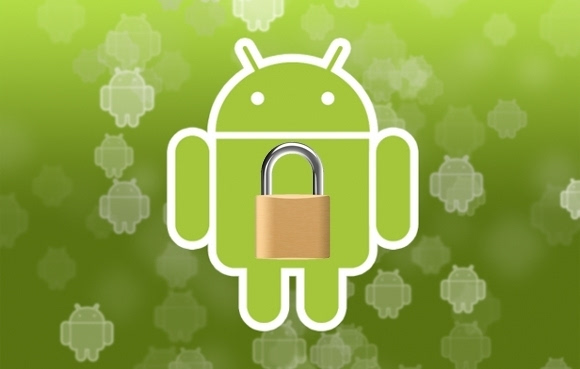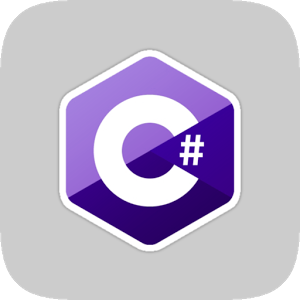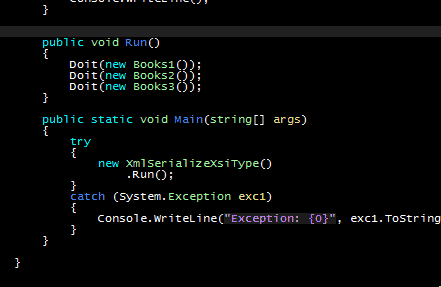Detailed introduction to WeChat menu
This article mainly introduces the Android imitation WeChat menu (Menu) (implemented using C# and Java respectively). This article gives the operating effects and implementation code of the C# and Java versions respectively. Friends in need can refer to this article. The Android menu is implemented programmatically. Of course, the same function can be accomplished using XML. The basic Java and C# writing methods are the same, so the XML method is used for Java demonstration in this article. It should be noted that if it is not VS For development, the resource file name must start with lowercase, otherwise an error will be reported. Running effect C# implementation using Android.App; using Android.OS; using Android.Views; using Android.Widget; namespaceMenuDemo { [Activity(Label = "@string/Application
1. Share an example of an Android imitation WeChat menu implemented using C# and Java respectively

Introduction: This article mainly introduces the Android imitation WeChat menu (Menu) (implemented using C# and Java respectively). This article provides the C# and Java versions respectively. For the operating effect and implementation code, friends in need can refer to
2. Introduction to the method of deleting menus through interfaces in WeChat public account development

#Introduction: This article mainly introduces the method of deleting the menu of WeChat public account through the interface. It has a good reference value. Let’s follow the editor to read it. Let’s go
3. C#Develop WeChat portal and introduce various expression methods of applying WeChat menu

Introduction: In the previous series of articles, we can see the importance of WeChat’s custom menu. It can be said that in WeChat public accounts, the menu is the user’s first impression. We need to plan the content, layout and other information of these menus. According to the definition of WeChat menu, we can see that there are two main types of menus, one is the ordinary Url menu (menu of type View), and the other is the Event menu (menu of type Click). Generally, WeChat’s Url menu cannot obtain any user information, but WeChat user information is very important, so another method (similar to redirection) is provided. Let us use it. This article mainly introduces the use of this redirection method menu so that we can communicate with users as much as possible
4. C#Develop WeChat Portal and applications use redirection to obtain user data in the WeChat menu

##Introduction: We know that WeChat’s The definition menu is divided into two categories, corresponding to Click type and View type, and redirection is a type of View type, as shown below.
5. C# Development. WeChat Portal and Application (15) - WeChat menu adds functions of scanning, sending pictures, and sending geographical location

6.
C# Develop WeChat portal and application - WeChat menu adds functions of scanning, sending pictures, and sending geographical location
Introduction: I have introduced many articles about using C# to develop WeChat portals and applications. They basically encapsulated almost all the interfaces that WeChat could do at that time. The WeChat framework has also accumulated many modules and users. Recently, I found that the WeChat public platform has added a lot of content, especially the functions of scanning, sending pictures, and sending geographical locations in the custom menu. These functional modules are very important. Think about it, I wanted to add one to the WeChat public account. The function of scanning QR codes was not available. Now it is possible. You can also take photos and upload functions. This article mainly introduces the series of articles based on my previous framework and further introduces how to integrate and use these new functions. Introduction: I once introduced the inside of the WeChat menu in the series of articles "C# Development of WeChat Portal and Application (11)--Introduction to Various Expressions of WeChat Menu" Through this redirection operation, we can get a code value, and then get the user's openID, and then get more user information. This is used a lot in the scenario of member information. This article introduces it in Quickly configure such a menu link on the website, and introduce how to obtain relevant user information in the background to achieve personalized display of page data. ##Introduction: In the previous series of articles, we can see the importance of WeChat’s custom menu. It can be said that in WeChat public accounts, the menu is the user’s first impression. We It is necessary to plan the content, layout and other information of these menus. According to the definition of WeChat menu, we can see that the general menu is mainly divided into two types, one is the ordinary Url menu (menu of type View), and the other is the event menu (menu of type Click). Under normal circumstances , WeChat’s Url menu cannot obtain any user information, but WeChat user information is very important, so it also provides another way (similar to redirection) for us to use. This article mainly introduces this kind of redirection. The use of method menus so that we can communicate with users as much as possible 9. A problem with URL redirection in WeChat development Introduction: Paste the code first: {code...} {code...} ========================== =========The problem is as follows: A connection needs to be opened in the WeChat menu. The link looks like this: http://rusice.tunnel.qydev.co... Locally, I use ugrok for penetration. win platform. Is it possible... 10. WeChat red envelope development issues Introduction: Click to receive red envelopes through the WeChat menu , the rule is that you can get up to 1 red envelope with one click. Now the problem is that sometimes two red envelopes can be issued with one click so that the merchant will not lose money. What I did before was to filter through the database records and receive the red envelope database insert records, but try It didn’t work, and then I thought about it through... [Related Q&A recommendations]: javascript - WeChat chooseImage interface selection of some models The picture inexplicably jumps to other pages javascript - Can you specify the URL to be opened in "Open in browser" in the WeChat menu? php - WeChat red envelope development problem Some models of WeChat chooseImage interface inexplicably jump to other pages after selecting pictures


The above is the detailed content of Detailed introduction to WeChat menu. For more information, please follow other related articles on the PHP Chinese website!

Hot AI Tools

Undresser.AI Undress
AI-powered app for creating realistic nude photos

AI Clothes Remover
Online AI tool for removing clothes from photos.

Undress AI Tool
Undress images for free

Clothoff.io
AI clothes remover

Video Face Swap
Swap faces in any video effortlessly with our completely free AI face swap tool!

Hot Article

Hot Tools

Notepad++7.3.1
Easy-to-use and free code editor

SublimeText3 Chinese version
Chinese version, very easy to use

Zend Studio 13.0.1
Powerful PHP integrated development environment

Dreamweaver CS6
Visual web development tools

SublimeText3 Mac version
God-level code editing software (SublimeText3)

Hot Topics
 How to use various symbols in C language
Apr 03, 2025 pm 04:48 PM
How to use various symbols in C language
Apr 03, 2025 pm 04:48 PM
The usage methods of symbols in C language cover arithmetic, assignment, conditions, logic, bit operators, etc. Arithmetic operators are used for basic mathematical operations, assignment operators are used for assignment and addition, subtraction, multiplication and division assignment, condition operators are used for different operations according to conditions, logical operators are used for logical operations, bit operators are used for bit-level operations, and special constants are used to represent null pointers, end-of-file markers, and non-numeric values.
 What is the role of char in C strings
Apr 03, 2025 pm 03:15 PM
What is the role of char in C strings
Apr 03, 2025 pm 03:15 PM
In C, the char type is used in strings: 1. Store a single character; 2. Use an array to represent a string and end with a null terminator; 3. Operate through a string operation function; 4. Read or output a string from the keyboard.
 How to handle special characters in C language
Apr 03, 2025 pm 03:18 PM
How to handle special characters in C language
Apr 03, 2025 pm 03:18 PM
In C language, special characters are processed through escape sequences, such as: \n represents line breaks. \t means tab character. Use escape sequences or character constants to represent special characters, such as char c = '\n'. Note that the backslash needs to be escaped twice. Different platforms and compilers may have different escape sequences, please consult the documentation.
 The difference between multithreading and asynchronous c#
Apr 03, 2025 pm 02:57 PM
The difference between multithreading and asynchronous c#
Apr 03, 2025 pm 02:57 PM
The difference between multithreading and asynchronous is that multithreading executes multiple threads at the same time, while asynchronously performs operations without blocking the current thread. Multithreading is used for compute-intensive tasks, while asynchronously is used for user interaction. The advantage of multi-threading is to improve computing performance, while the advantage of asynchronous is to not block UI threads. Choosing multithreading or asynchronous depends on the nature of the task: Computation-intensive tasks use multithreading, tasks that interact with external resources and need to keep UI responsiveness use asynchronous.
 The difference between char and wchar_t in C language
Apr 03, 2025 pm 03:09 PM
The difference between char and wchar_t in C language
Apr 03, 2025 pm 03:09 PM
In C language, the main difference between char and wchar_t is character encoding: char uses ASCII or extends ASCII, wchar_t uses Unicode; char takes up 1-2 bytes, wchar_t takes up 2-4 bytes; char is suitable for English text, wchar_t is suitable for multilingual text; char is widely supported, wchar_t depends on whether the compiler and operating system support Unicode; char is limited in character range, wchar_t has a larger character range, and special functions are used for arithmetic operations.
 How to convert char in C language
Apr 03, 2025 pm 03:21 PM
How to convert char in C language
Apr 03, 2025 pm 03:21 PM
In C language, char type conversion can be directly converted to another type by: casting: using casting characters. Automatic type conversion: When one type of data can accommodate another type of value, the compiler automatically converts it.
 What is the difference between char and unsigned char
Apr 03, 2025 pm 03:36 PM
What is the difference between char and unsigned char
Apr 03, 2025 pm 03:36 PM
char and unsigned char are two data types that store character data. The main difference is the way to deal with negative and positive numbers: value range: char signed (-128 to 127), and unsigned char unsigned (0 to 255). Negative number processing: char can store negative numbers, unsigned char cannot. Bit mode: char The highest bit represents the symbol, unsigned char Unsigned bit. Arithmetic operations: char and unsigned char are signed and unsigned types, and their arithmetic operations are different. Compatibility: char and unsigned char
 Common errors and ways to avoid char in C language
Apr 03, 2025 pm 03:06 PM
Common errors and ways to avoid char in C language
Apr 03, 2025 pm 03:06 PM
Errors and avoidance methods for using char in C language: Uninitialized char variables: Initialize using constants or string literals. Out of character range: Compare whether the variable value is within the valid range (-128 to 127). Character comparison is case-insensitive: Use toupper() or tolower() to convert character case. '\0' is not added when referencing a character array with char*: use strlen() or manually add '\0' to mark the end of the array. Ignore the array size when using char arrays: explicitly specify the array size or use sizeof() to determine the length. No null pointer is not checked when using char pointer: Check whether the pointer is NULL before use. Use char pointer to point to non-character data






